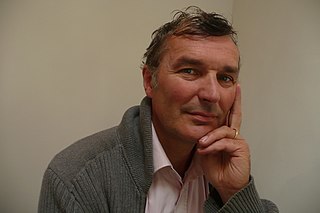
Utrecht is the fourth-largest city of the Netherlands, as well as the capital and the most populous city of the province of Utrecht. The municipality of Utrecht is located in the eastern part of the Randstad conurbation, in the very centre of mainland Netherlands, and includes Haarzuilens, Vleuten en De Meern. It has a population of 361,699 as of December 2021.

Baarn is a municipality and a town in the Netherlands, near Hilversum in the province of Utrecht.

Gymnasium is a term in various European languages for a secondary school that prepares students for higher education at a university. It is comparable to the US English term preparatory high school. Before the 20th century, the gymnasium system was a widespread feature of educational systems throughout many European countries.
The lyceum is a category of educational institution defined within the education system of many countries, mainly in Europe. The definition varies among countries; usually it is a type of secondary school. Basic science and some introduction to specific professions are generally taught.

A secondary school or high school is an institution that provides secondary education and also usually includes the building where this takes place. Some secondary schools provide both lower secondary education and upper secondary education, i.e., both levels 2 and 3 of the ISCED scale, but these can also be provided in separate schools.

The Amsterdams Lyceum is a Dutch secondary school combining gymnasium and atheneum. Both school types prepare students to go to university. It was established in 1917. The Amsterdams Lyceum has around 1100 students, most of whom are from Amsterdam, but small numbers from outer municipalities such as Amstelveen and Badhoevedorp also find their way to this school.
Carel Balth was a Dutch artist and curator.
Rosa Bassett, MBE, BA was an English educationalist and headmistress of Stockwell Secondary School. After a relocation from Stockwell the school's name was changed to County Secondary School, Streatham. Located in Welham Road, London, it was later renamed Rosa Bassett School in her memory and honour.

Gerard Caris is a Dutch sculptor and artist who has pursued a single motif throughout the course of his artistic career, the pentagon.
Johannes Gerardus Franciscus (Jan) Veldhuis is a Dutch administrator/governor in the fields of scientific education and research, healthcare and culture, nationally and internationally. His last post was president of Utrecht University, from 1986 until 2003. He still holds various part-time governance positions.

The Stedelijk Gymnasium Haarlem or the Latin School of Haarlem is a secondary school in Haarlem, Netherlands. The school was founded in 1389 and is therefore one of the oldest schools in the world. The school offers voorbereidend wetenschappelijk onderwijs exclusively and is an independent gymnasium enrolling 822 students and 95 teachers, for a teacher/student ratio of 8.6.

The Hoogere Burger School is a former HBS Hogere burgerschool on the Zijlvest, Haarlem, The Netherlands. It was one of the oldest public schools in Haarlem, moved from the Jacobijnestraat and built as a boys school in 1906. It has been converted into apartments.
The Esprit Scholengroep is a community of primary and secondary schools in Amsterdam. On their official website they describe themselves as multicultural, international and dynamic.
Benthem Crouwel Architects is a Dutch architectural firm founded in 1979 by Jan Benthem and Mels Crouwel. Today, partners Pascal Cornips, Daniel Jongtien, Saartje van der Made and Joost Vos lead an international team of 60 professionals at the Amsterdam based Benthem Crouwel LAB. They work on projects from Amsterdam, Paris and California.

Ruud-Jan Kokke is a Dutch designer who started his career in the mid-eighties and became known for his furniture, inventive objects, interiors and designs for public space. He has received numerous nominations and awards. He is married to the visual artist and jewellery designer Petra Hartman.
Jacob Hiegentlich was a gay Dutch poet of Jewish descent. He committed suicide in 1940, at age 33, days after the German invasion of the Netherlands.

Christiaan Pieter Gunning was a Dutch pedagogue and classicist. He obtained his doctorate at the University of Amsterdam as a doctor in classical literature in 1915.
Frits Tellegen was a Dutch urban designer from Lelystad.









